Visitor Guide to Wonderful Luxor Temple
In this guide we visit Luxor Temple, a wonderful ancient Egyptian archaeological site located in the heart of the city of Luxor.
A visit to Luxor Temple
Having seen the awe-inspiring Karnak Temple Complex, my guide Mohammed and me went on to visit the next sight on our itinerary: Luxor Temple.
Karnak is connected to Luxor Temple by the 3-kilometre-long Avenue of the Rams, which is also known under the name of Avenue of the Sphinxes.
This ancient Egyptian road is named this way because it is lined with Sphinx-like ram statues.
In Thebes as the city of Luxor was known in ancient times, the three most popular gods were Amun-ra, Mut and Khonsu, whom together are known as the Theban Triad.
Amun-Ra’s sacred animal was the ram, which is why you see it depicted a lot around Luxor’s archaeological sites.


Entering the temple
When we arrived at Luxor Temple the sun was just about to set.
Sunset is a perfect time to visit Luxor Temple as the crowds will have thinned out by then and the stones glow beautifully in the fading sunlight.
You’ll instantly notice the large obelisk standing in front of the first pylon (gateway) of the temple.
There used to be two obelisks standing in front of Luxor Temple, although the second one was gifted to France in 1830, dismantled and moved to Paris, where it still stands on the Place de la Concorde.
The first pylon is also adorned with large statues of Pharaoh Ramses II.


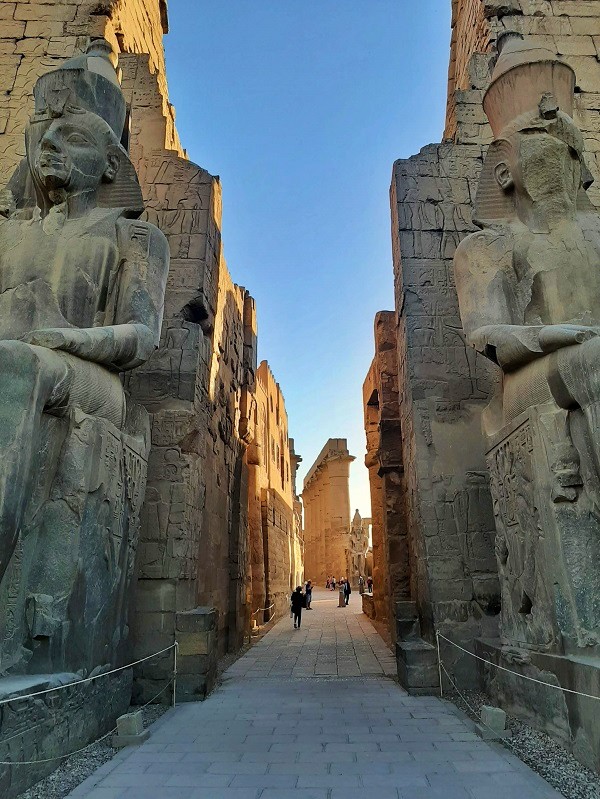

Luxor Temple history
In the time of Egypt’s New Kingdom Luxor Temple was known as Ipt-Rsyt by the locals.
Most of the temple was built under the reigns of Pharaoh Amenhotep III (1388 to 1351 BC) and Pharaoh Ramses II (1279 to 1213 BC), who is also known as Ramses the Great.
The temple was the centre stage during the Opet Festival that took place each year in ancient Egypt.
During this festival, the barques of the three main Theban deities were carried from Karnak to Luxor Temple in order to perform ritual ceremonies.
Luxor Temple is one of Egypt’s most famous and beautiful temples and is known for its elegant simplicity, which makes it easier to explore than the more labyrinth temple complex of Karnak.
However, you are still well-advised to have a guide with you when you explore Luxor Temple if you fully want to understand ancient Egyptian mythology, history as well as all the symbolism behind the temple’s design.

Great Court of Ramses II
Once you have passed through the first pylon you will first reach the Great Court of Ramses II.
This courtyard is surrounded by a double row of closed lotus bud columns and a couple of statues of Ramses II sitting down and standing upright.
On the walls of the Great Court of Ramses II you can find reliefs showing the Pharaoh making offers to the gods.
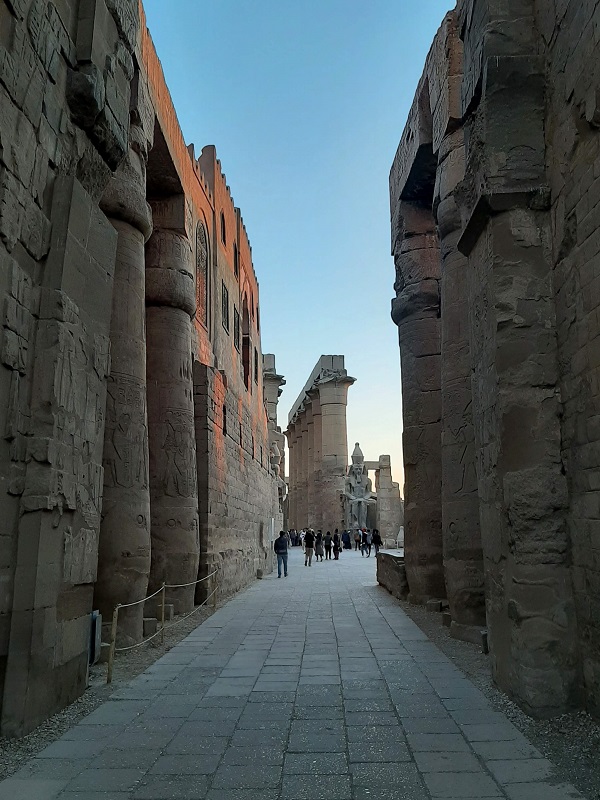


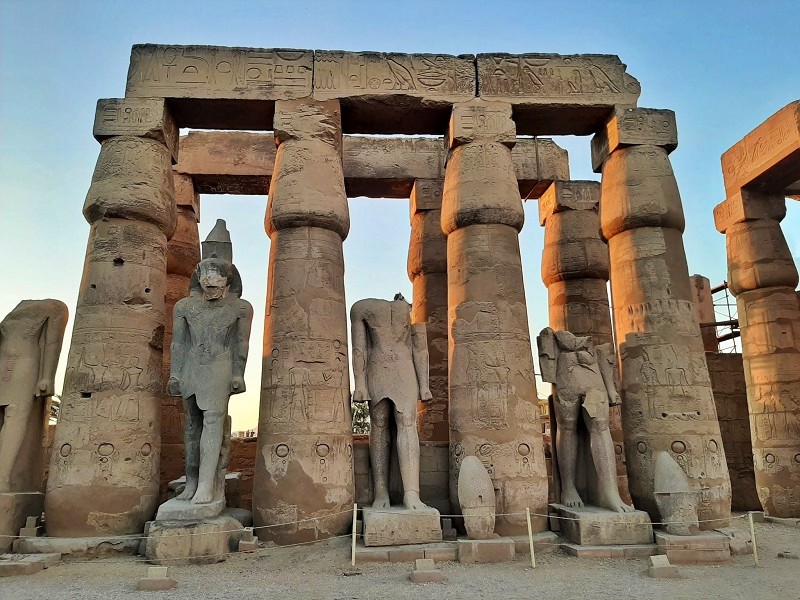


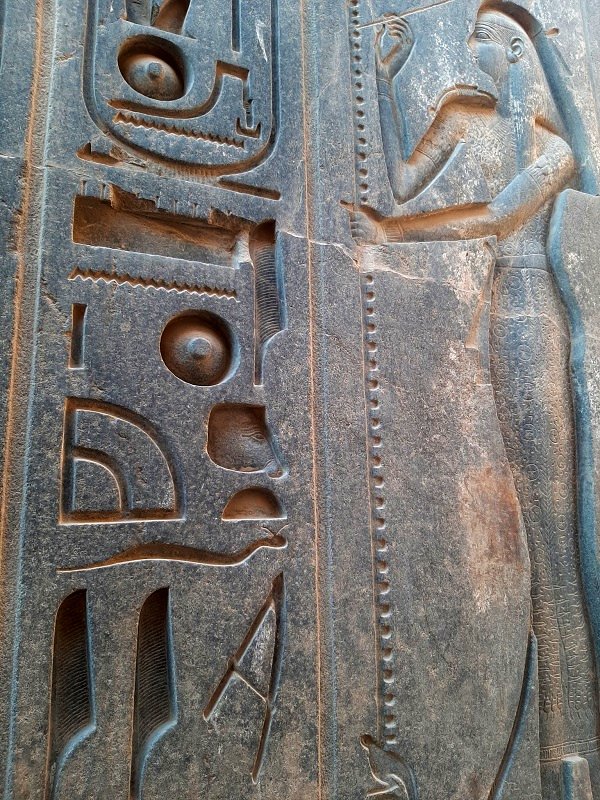
Mosque
When you stand in the middle of the Great Court of Ramses II and look towards the south-east, you can see a mosque partially overhanging this courtyard of Luxor Temple.
This 14th century mosque is the Abu El-Haggag Mosque.
The mosque uses some of the ancient Egyptian columns and walls as its foundation.
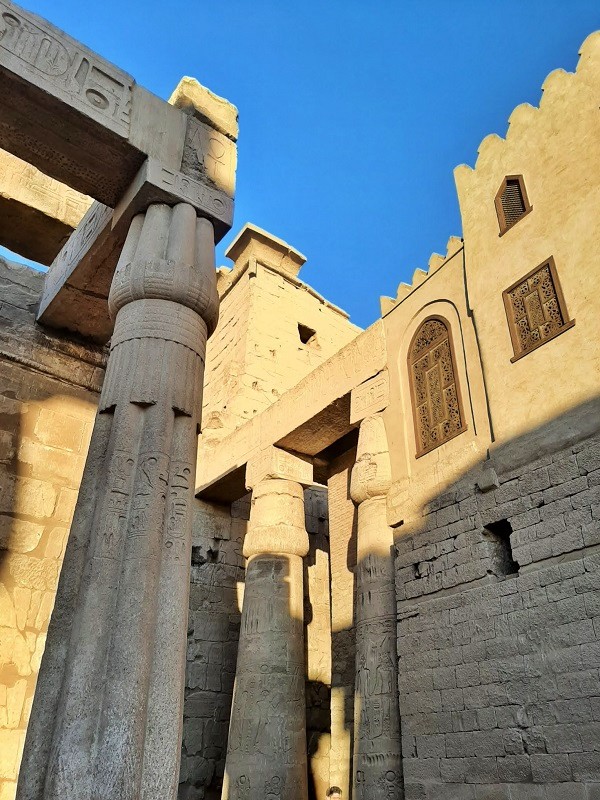
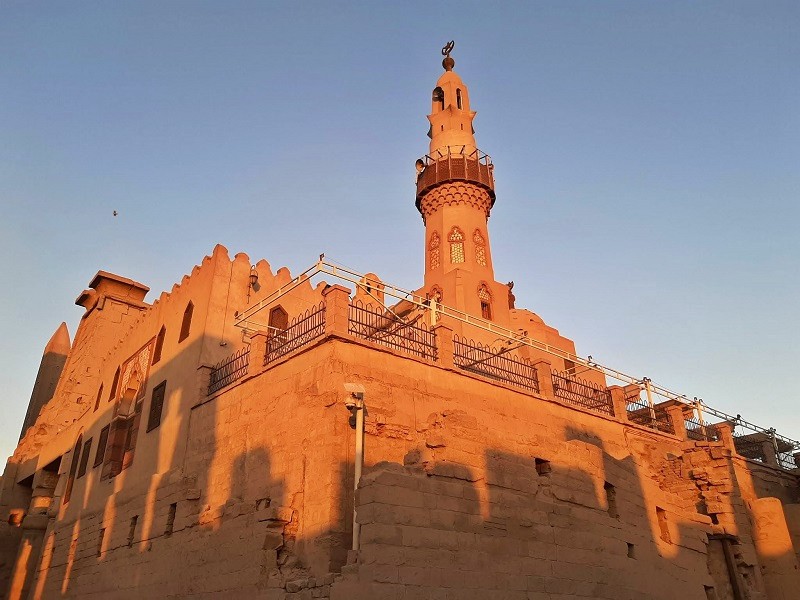
Colonnade
Next up on your visit to Luxor Temple will be the Colonnade of Amenhotep III.
The colonnade features a total of 14 opened papyrus flowers columns, each being 16 metres (52 ft).
This colonnade hall (it used to be covered by a roof) acted as the grand entranceway to the actual Temple of Amun, the supreme Egyptian deity and creator of the universe.
At the entrance of the colonnade you can see twin statues of a seated Pharaoh Ramses II.
On your right you can also find a beautiful statue of Pharaoh Amenhotep III and his powerful wife Queen Tiye.
Behind the columns you can see walls that were decorated during the rule of Pharaoh Tutankhamun.
The reliefs celebrate Egypt’s return to traditional polytheism after the previous ruler Akhenaten had abandoned the Theban orthodoxy and started worshipping the deity Aten instead in what was known as Atenism.
You can also see depictions of the Opet Festival celebrations and religious processions on Tutankhamun’s walls such as a relief of acrobats doing backflips.
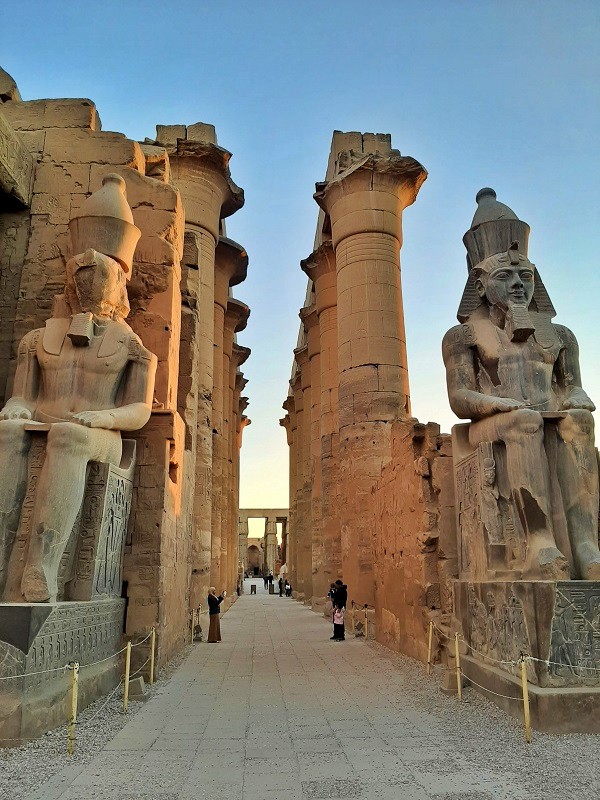
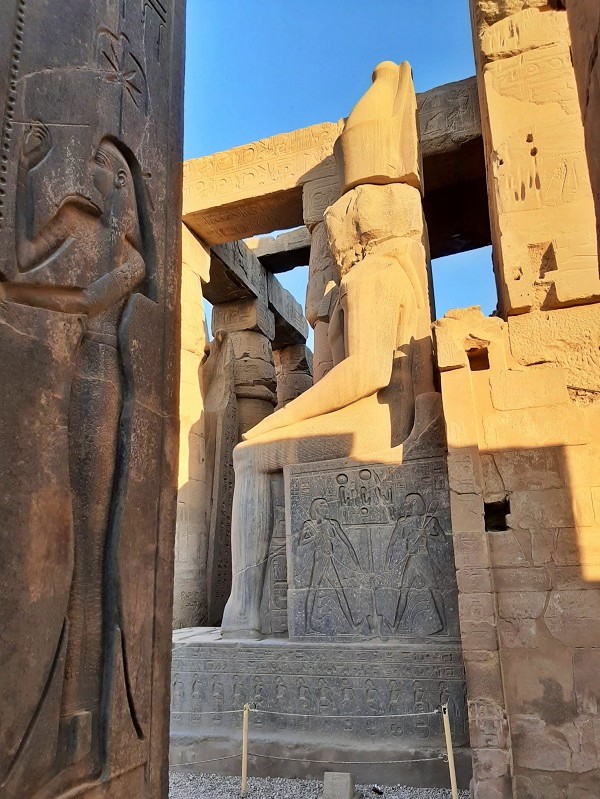
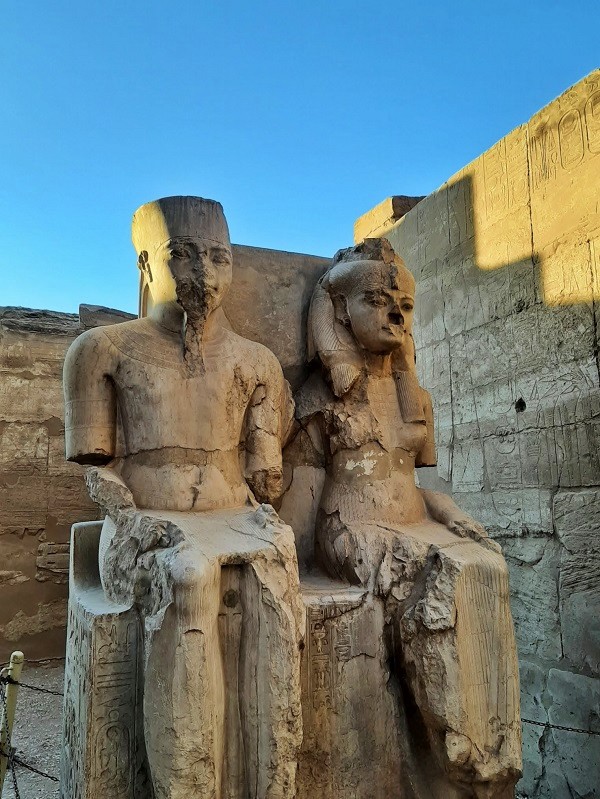
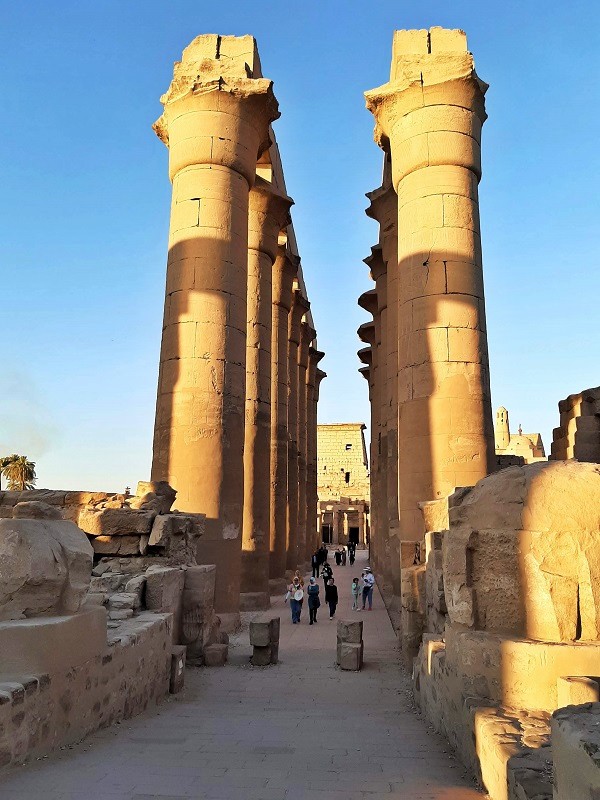


Sun court
At the end of the colonnade you can find the Sun Court of Amenhotep III, which is also known as the Peristyle Court.
This court is enclosed on both your left as well as on your right-hand side by a double row of beautiful papyrus bundle columns.
There also used to be a double row of columns at the north side of the court facing the colonnade.
However, all you can see now are the remains of the base and the lower parts of the shaft as the rest has broken off.
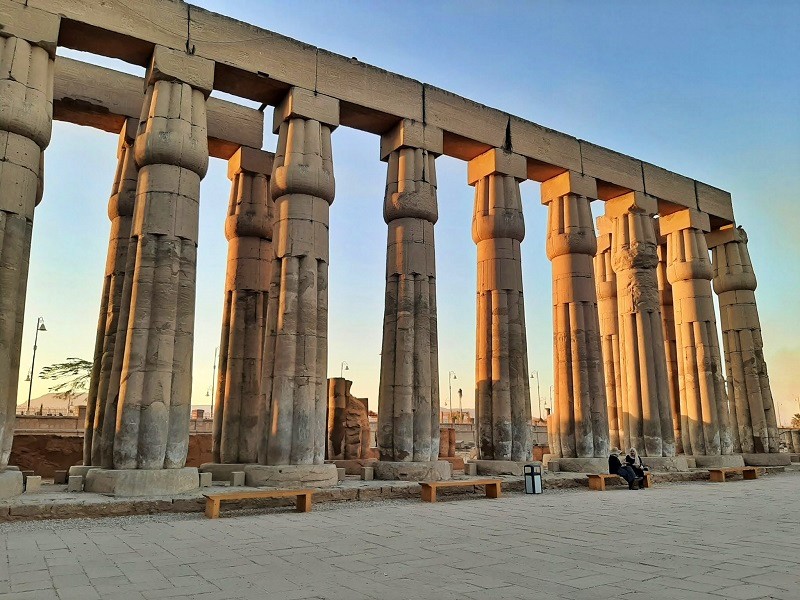

Hypostyle hall
On the south side of the Sun Court you can find the Hypostyle Hall, a temple area which is also known as a column hall or column court.
The Hypostyle Hall leads to the main rooms of Luxor Temple, among which are chapels to Mut, Khonsu and of course the great sanctuary of Amun where his processional barque would be placed.

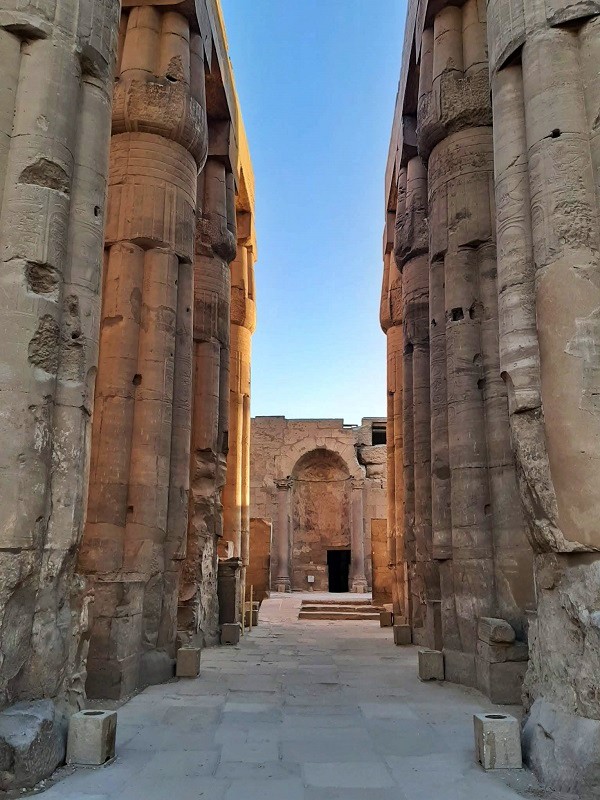
Roman paintings
What is interesting about Luxor Temple is that parts of it have been repurposed later on by the Romans.
The shrine of Mut was for example first transformed into a chapel dedicated to the Roman Tetrarchy led by Emperor Diocletian.
It was later transformed into a church chapel.
The figures depicted on a magnificent wall painting here are often mistaken for Christian saints but are actually Roman officials.
The arch and the two columns at the far southern end of the temple also date from the Roman era.
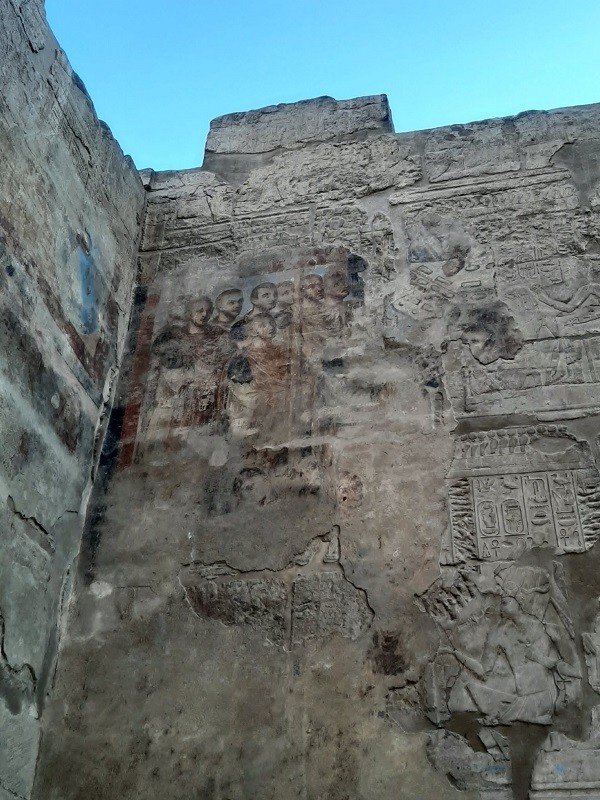
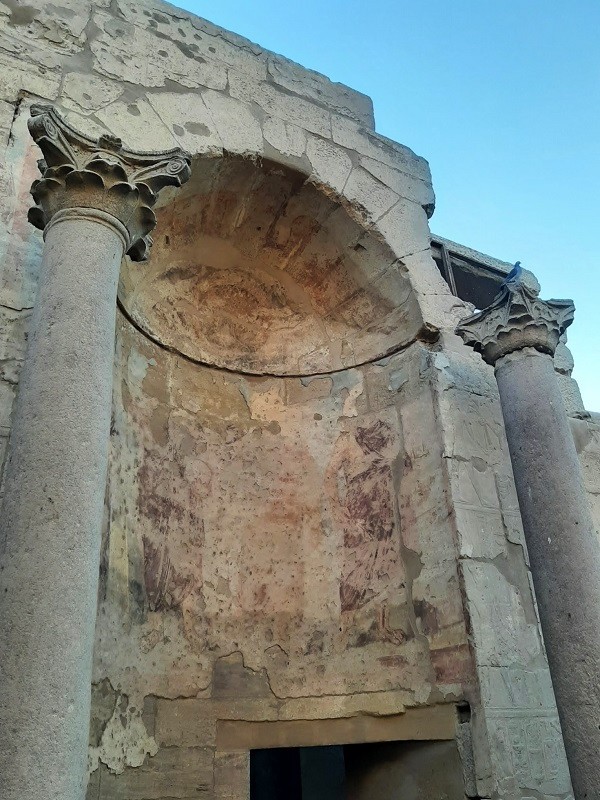
Sanctuaries and side rooms
Perhaps the most magnificent part of Luxor Temple are the inner sanctuaries and side rooms.
Some of the sanctuaries have some amazingly well-preserved reliefs with their original colours still intact.
These include the birth room of Amenhotep III as well as the sanctuary of Amun.
The sanctuary of Amun was originally built by Amenhotep III although lots of reliefs in this room were replaced under the rule of Alexander the Great after he managed to conquer Egypt.
Among others, you can see the cartouche with the name of Alexander the Great in hieroglyphs as well as him being depicted as Pharaoh while giving offers to Amun.
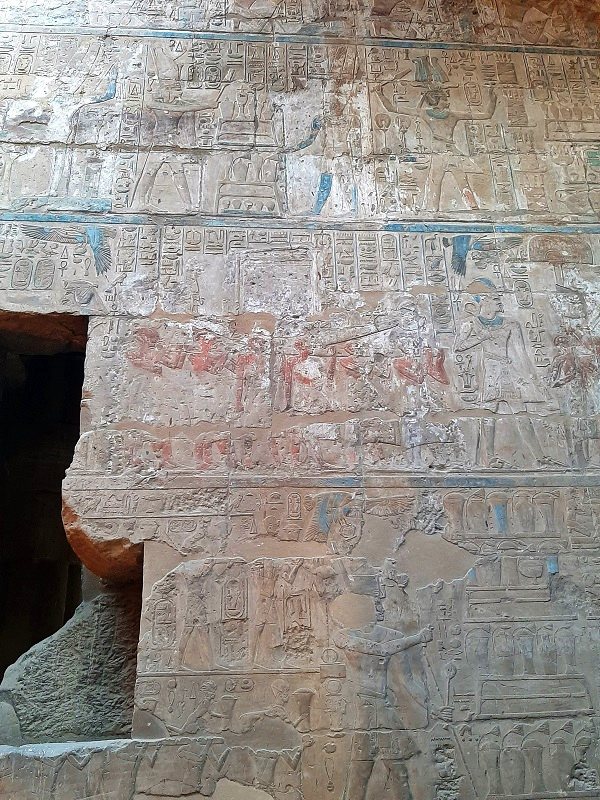
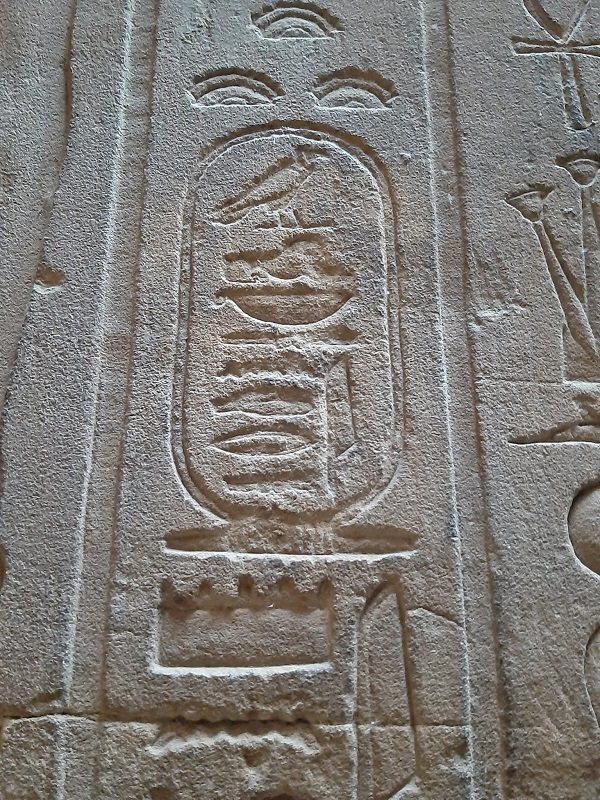

Exiting the temple
After a highly interested guided tour around Luxor Temple, Mohammed and I headed back to our car for the drive back to our Nile cruise ship.
Before heading back to the parking lot, I spent some time walking around the site on my own in order to take a couple of more pictures and to absorb the wonderful surroundings at my own pace.
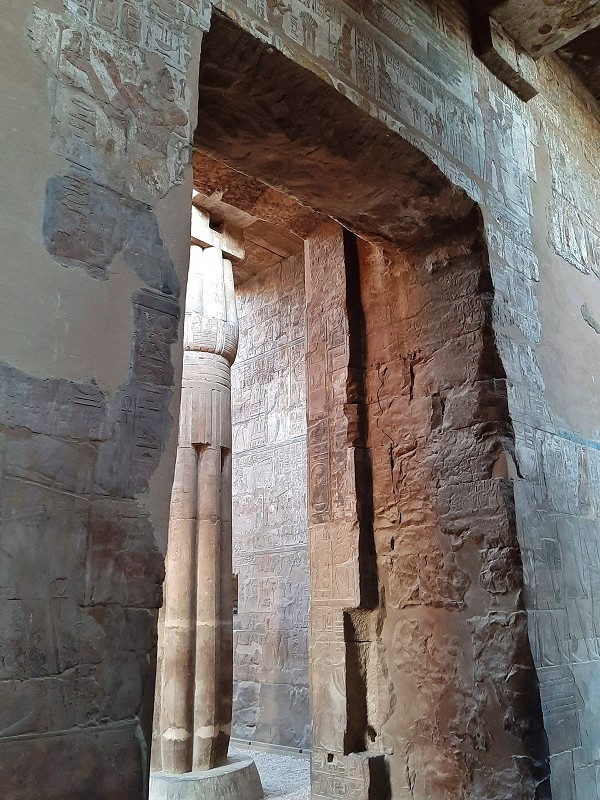

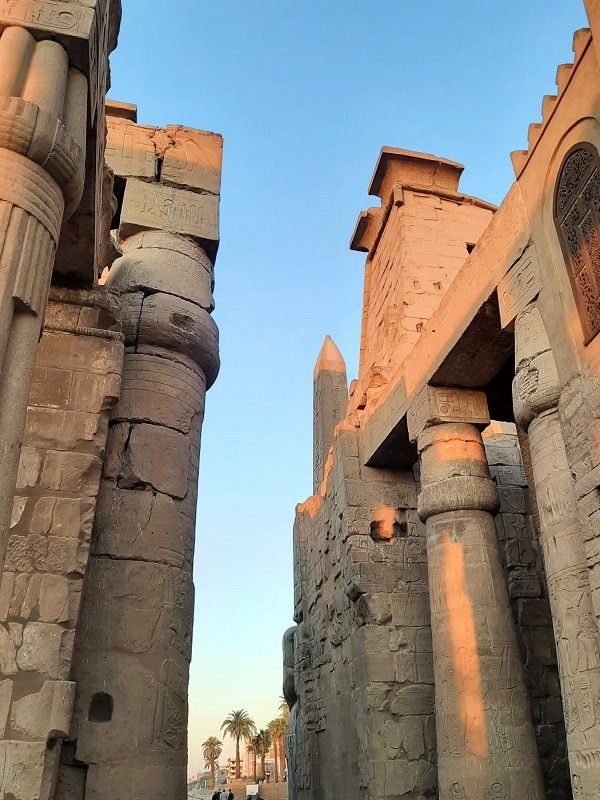
Conclusion
Luxor Temple is a magnificent ancient Egyptian temple located in the heart of the city of Luxor.
It was built under the reign of Pharaohs Amenhotep III and Ramses II – two powerful historic figures who left their mark on ancient Egypt.
From the moment you walk through the first pylon to your arrival in the sanctuary, Luxor Temple will impress you with its elegant simplicity.
The large statues, obelisks and columns are all highly impressive.
Perhaps the most beautiful and interesting part of the temple are main sanctuaries and the side rooms, as this is where you can see some of the most interesting and best preserved reliefs.
It’s highly recommended to visit Luxor Temple with a professional guide if you want to understand all the symbolism behind these reliefs and the design of the temple.
Trip report index
This article is part of the ‘Walk Like an Egyptian: A Grand Tour of Egypt‘ trip report, which consists of the following chapters:
1. Red-Eye Ramblings of a Late Night Flight to Cairo
2. A Visit to the Pyramids of Giza by Camel
3. Review: Sofitel Nile El Gezirah, Zamalek, Cairo
4. Exploring the Medieval Old Town and Islamic History of Cairo
5. Visiting the Museum of Egyptian Antiquities in Cairo
6. Mar Girgis: The Churches of Christian Old Cairo
7. Review: Ernst Watania Sleeping Train Cairo to Aswan
8. The Ancient Quarry of Aswan and the Unfinished Obelisk
9. A Boat Ride From Aswan to the Temple of Isis at Philae
10. A Visit to the Aswan High Dam and Lake Nasser
11. A Visit to the Nubian Village on Aswan’s Elephantine Island
12. Aswan Guide: A Visit to Egypt’s Most Stunningly Located City
13. A Half Day Trip From Aswan to Amazing Abu Simbel
14. Nile River Cruise Guide: All Info for Your Egypt Boat Trip
15. Review: M/S Princess Sarah Nile River Cruise Ship
16. Nile Cruise: Sailing From Aswan to Kom Ombo
17. A Visit to the Ancient Crocodile Temple of Kom Ombo
18. A Visit to the Temple of Horus at Edfu
19. Nile Cruise: Sailing From Edfu to Luxor
20. Luxor, Egypt: Visiting the Sights of Ancient Thebes
21. A Visit to Luxor’s Giant Temple Complex of Karnak
22. Visitor Guide to Wonderful Luxor Temple (current chapter)
23. Valley of the Kings: A Visit to Luxor’s Ancient Necropolis
24. The Temple of Hatshepsut: A Visit to a Unique Mortuary Temple
25. Review: Sofitel Winter Palace Hotel, Luxor, Egypt
26. Review: Daytime Train Luxor to Cairo, Egypt
27. Review: Steigenberger Hotel El Tahrir, Cairo
28. A Visit to the Pyramid of Djoser and the Saqqara Necropolis
29. A Visit to the Dahshur Pyramid Complex
30. Memphis: Exploring the Old Capital of Ancient Egypt
31. From Cairo to Alexandria by Train: My Travel Experience
32. Review: Paradise Inn Le Metropole Hotel, Alexandria, Egypt
33. Alexandria: A Visit to Egypt’s Historic Mediterranean Port City
34. Egypt: Impressions and Reflections After My Two Week Trip
35. Epilogue: Safety and How to Deal With Street Hassle in Egypt

